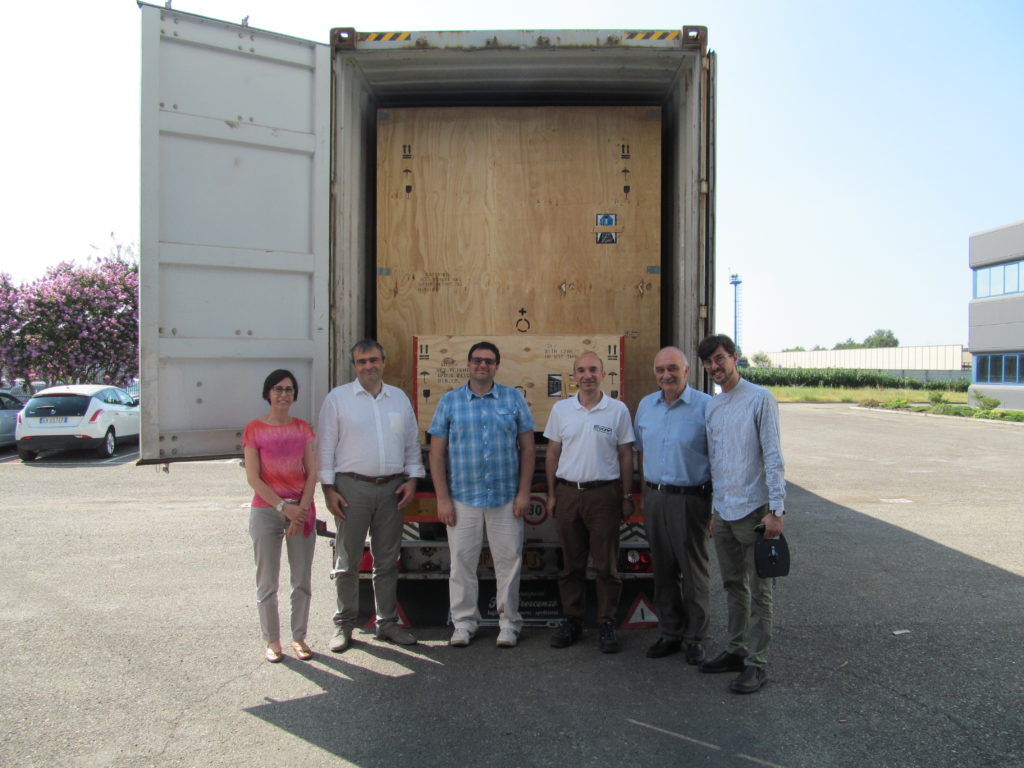OCEM’s four Switching Network Units will produce the high voltage needed for plasma initiation in the JT-60SA fusion reactor
OCEM Power Electronics has shipped four power systems to a new tokamak reactor under construction in Japan that will help develop fusion as a safe, abundant energy source with low environmental impact.
The Switching Network Units (SNU) will produce the high voltage needed for plasma initiation in the JT-60SA, or Japan Torus 60 Super Advanced reactor.
The project is a collaboration between the Japanese and European fusion research communities and was designed to support the International Thermonuclear Experimental Reactor (ITER) under construction in Cadarache, France, and to investigate the best ways to optimize the operation of future fusion power plants.
Fusion is achieved by heating subatomic particles until they enter an electrically charged state called plasma and fuse to form a heavier nucleus. The reaction produces a large amount of energy that can then be converted to electricity.
The most advanced reactors today use a tokamak — a toroidal, or doughnut-shaped, chamber that holds the plasma using magnetic fields. The plasma is heated until fusion occurs, with a central solenoid coil providing the inductive flux to ramp up the plasma current and contributing to plasma shaping.
The central solenoid coil in the JT-60SA is divided into four superconducting modules called CS 1-4. Each of these is connected to an independent power supply circuit that includes a four-quadrant AC/DC converter and a SNU, which is used to produce the high voltage required for the plasma initiation.
Each SNU must interrupt a direct current of up to 20 kA in less than 1 millisecond in order to produce a voltage of up to 5 kV. Since the central solenoid is segmented into four sections, the intervention must occur simultaneously in all four SNUs, meaning the maximum main switch opening and closing times must be less than 1 ms each.
Due to the novelty of the system and the critical role the SNUs play in plasma initiation, the first SNU was subjected to rigorous testing inside a working tokamak, the Frascati Tokamak Upgrade (FTU) at the Italian National Agency for New Technologies, Energy and Sustainable Economic Development (ENEA) Frascati Research Center.
These tests were highly successful, with the critical switch off-time achieved in less than 0.1 ms and the switch on-time in about 1 ms. The other three SNUs were then produced and tested.
The four SNUs are now being shipped from OCEM’s headquarters in Bologna, Italy, to the Naka Fusion Research Centre near Tokyo, where the JT-60SA project is being managed by the Japan Atomic Energy Agency.
The systems were disassembled, wrapped in waterproof antistatic bags, and packed into 52 wooden crates with shock detectors that monitor for excessive stress during transport. Last week the crates were loaded into five containers and traveled first to the Port of La Spezia in Liguria, Italy, before embarking on a 44-day voyage to the Port of Yokohama on the Tokyo Bay.
Although the JT-60SA and ITER are independent research initiatives, JT-60SA was designed to support ITER’s research aims by developing and testing practical, reliable plasma control schemes that can be incorporated into future power plants.
OCEM Power Electronics, since 1943 the specialist in Power Electronics.
